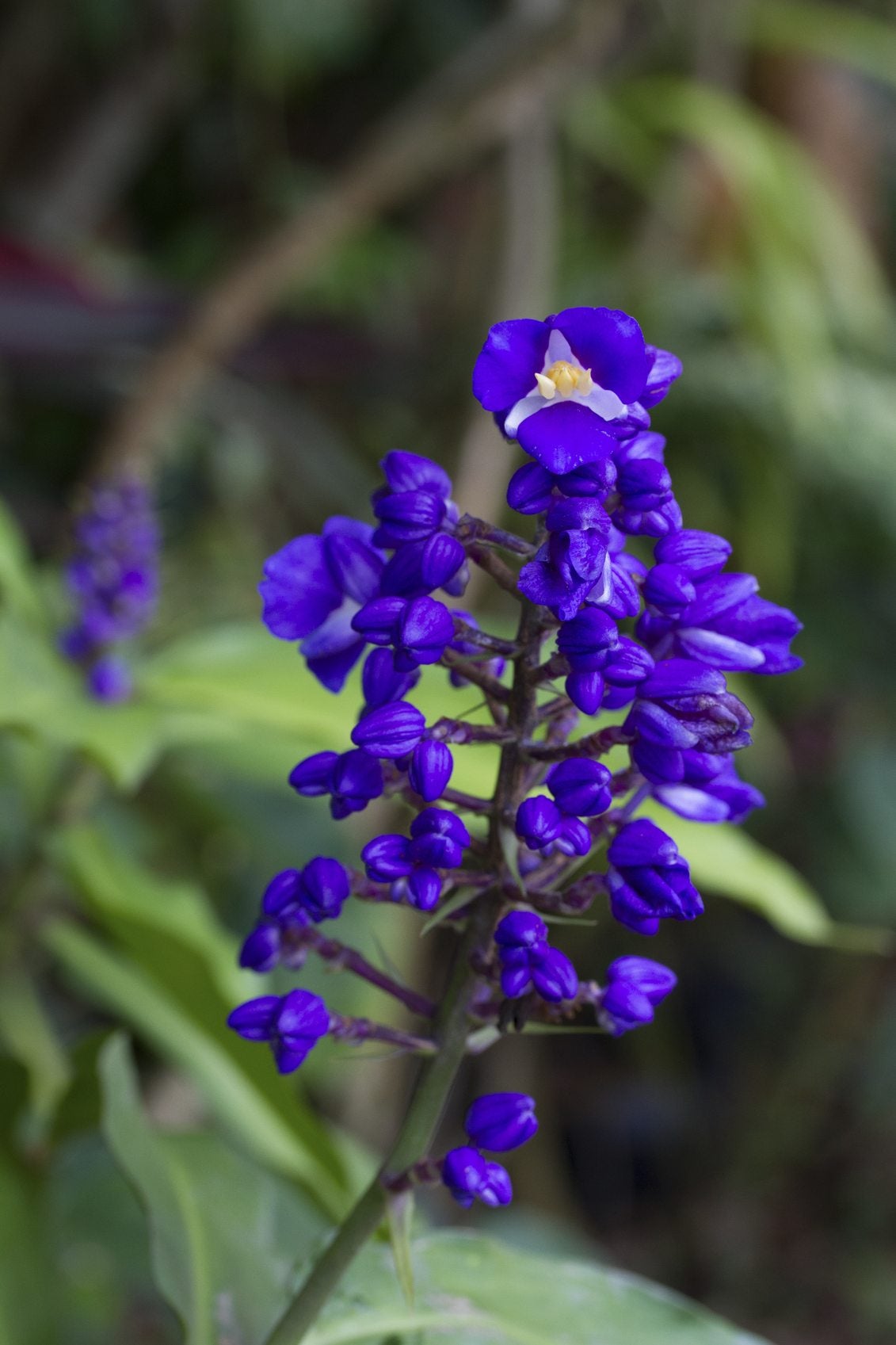Blue Pendant Plant Info: How To Grow A Weeping Blue Ginger Plant

The weeping blue ginger plant (Dichorisandra pendula) is not a true member of the Zingiberaceae family but has the appearance of a tropical ginger. It is also known as blue pendant plant and makes an outstanding houseplant. The blooms come every year and the glossy green leaves closely resemble plants in the ginger family. Growing weeping blue ginger in the home or outdoors in warmer regions is easy and provides a much-needed pop of color almost year-round.
About Weeping Blue Ginger Plant
Ginger plants have amazing foliage and flowers. Weeping blue ginger flowers, though, are very different from those plants in the true ginger family. Their flowers have a distinctly tropical look while those of the weeping ginger are delicate and small. They dangle from the stems, leading to the name blue pendant plant.
Blue ginger is a member of the spiderwort family and not affiliated with true gingers. What it does have in common with ginger is its arrow-shaped, glossy green, firm leaves. These dance along a delicate wiry stem that arches, creating a cascading effect.
The deep blue flowers hang from the stems and are comprised of three large petals with a white center. Weeping blue ginger flowers grow up to 2 inches (5 cm.) in diameter and bloom from spring well into late fall. Bees will love the flowers.
Growing Weeping Blue Ginger
Weeping blue ginger hails from Brazil and likes a tropical environment. It needs dappled light and well-draining, humus rich soil. During sunny periods, the flowers will close and reopen when direct sun is not on the plant.
Outside these tropical-like areas, the plant is best grown in a container. Move the container to a partial shade location outside in summer. Bring the plant indoors well before cold temperatures threaten.
The biggest tip on weeping blue ginger care is to keep the plant moist but do not overwater it. Use a moisture meter to determine the root moisture levels or put a finger through the drainage holes to make sure soil is damp at the roots.
Gardening tips, videos, info and more delivered right to your inbox!
Sign up for the Gardening Know How newsletter today and receive a free copy of our e-book "How to Grow Delicious Tomatoes".
This tropical plant needs high humidity. Place the container in a saucer that is filled with pebbles and water. The evaporation will increase humidity. Alternatively, mist the leaves daily.
Fertilize with houseplant food in spring and again in midsummer. Do not feed the plant in winter.
The entire plant is compact and will not exceed 36 inches (92 cm.). The branches are arranged laterally and can be pruned from the top to keep the plant dense. You can share this plant through cuttings or division.

Bonnie Grant is a professional landscaper with a Certification in Urban Gardening. She has been gardening and writing for 15 years. A former professional chef, she has a passion for edible landscaping.
-
 Try The Trend – Turn Any Bed Into A Keyhole Garden With This Clever In-Ground Composter
Try The Trend – Turn Any Bed Into A Keyhole Garden With This Clever In-Ground ComposterKeyhole gardening is an efficient and sustainable practice that saves space. Get started on this DIY project quickly and easily with an in-ground composter.
By Bonnie L. Grant
-
 4 Superfast Composting Methods: Turn Waste Into Garden Gold In 30 Days Or Less
4 Superfast Composting Methods: Turn Waste Into Garden Gold In 30 Days Or LessTry the fastest composting methods to turbocharge your pile and transform kitchen scraps and garden waste into finished compost in just a few weeks.
By Mary Ellen Ellis
